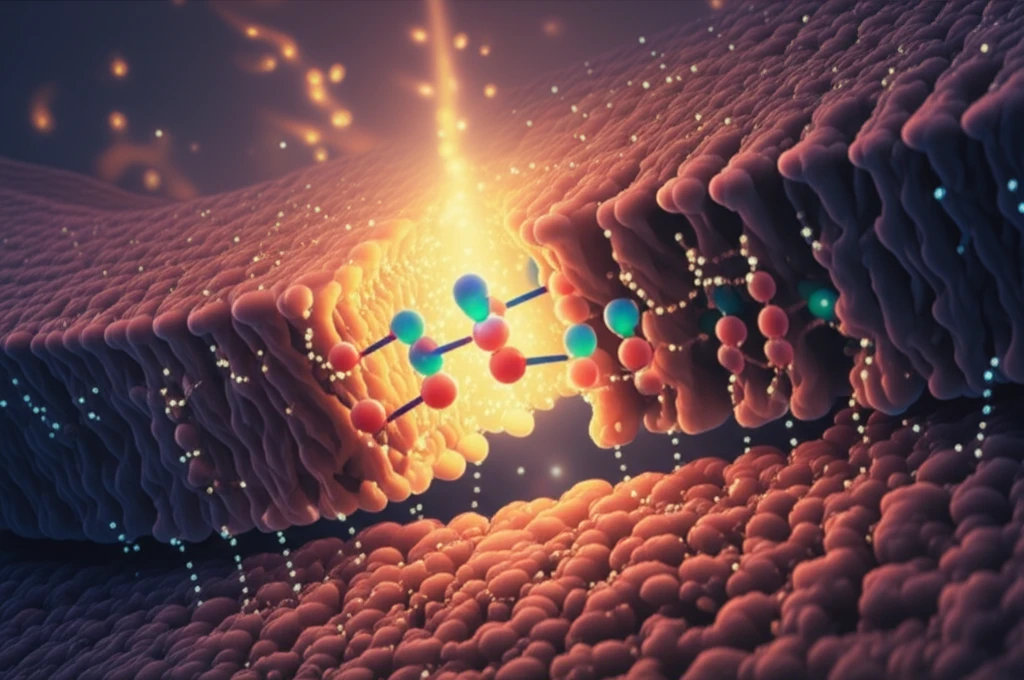
Sugar Rush: How Bacteria Snag Their Sweet Treats with H-Bonds
"Unlocking the Secrets of Bacterial Sugar Transport: New Research Reveals the Role of Hydrogen Bonds in Chitoporin."
Imagine tiny, single-celled organisms constantly battling for survival in a vast, competitive world. For many bacteria, sugars are the primary energy source, their 'sweet treats' that fuel life. But how do these microscopic beings efficiently grab and transport these vital nutrients across their outer membranes? This is where bacterial sugar-specific channels come into play, acting as gatekeepers for essential sugars.
Vibrio harveyi, a bioluminescent marine bacterium, offers a fascinating case study. Known to cause vibriosis, a devastating disease in fish and prawn farming, this bacterium relies on a specialized channel called VhChiP (Vibrio harveyi Chitoporin) for the uptake of chitin-oligosaccharides, a specific type of sugar. VhChiP exhibits a remarkable selectivity for chitohexaose, a six-unit chain of N-acetylglucosamine.
New research dives deep into the mechanics of VhChiP, specifically exploring the role of hydrogen bonds (H-bonds) in the sugar-binding process. By manipulating the channel's environment and observing how sugar transport changes, scientists are uncovering fundamental principles that govern bacterial nutrition and opening doors for innovative antimicrobial strategies.
Hydrogen Bonds: The Unsung Heroes of Sugar Transport

The study focuses on how hydrogen bonds facilitate the movement of chitohexaose through the VhChiP channel. Researchers compared the rate of sugar transport in normal water (H2O) versus heavy water (D2O), where deuterium replaces hydrogen. D2O has slightly different physical-chemical properties that affect the strength of hydrogen bonds. What they found was remarkable: replacing H2O with D2O significantly slowed down sugar penetration into the channel.
- Slowing Down Sugar: The research team found that H-bonds were essential for effective entry and exit of chitohexaose.
- Hydrophobicity Matters: The hydrophobic constriction zone was diminished and reduced the rate of sugar penetration.
- Mutant Insights: Mutant channels revealed the role of H-bonds in sugar permeation.
Opening Doors for New Antimicrobials
This research not only illuminates the fundamental mechanisms of bacterial sugar uptake but also suggests exciting possibilities for developing new antimicrobial strategies. By understanding how bacteria rely on hydrogen bonds to capture essential nutrients, scientists can potentially design molecules that disrupt this process, effectively starving the bacteria and preventing infection.
The team's investigations into how different temperatures affect the energy needed for sugar transport revealed crucial details about VhChiP, highlighting the subtle dance of energy and molecular interactions at play. These findings pave the way for new approaches to combat bacterial infections, potentially sidestepping the growing problem of antibiotic resistance.
As our understanding of bacterial transport mechanisms deepens, the potential for innovative solutions to combat infectious diseases grows, promising a future where we can outsmart even the most resilient bacteria.
